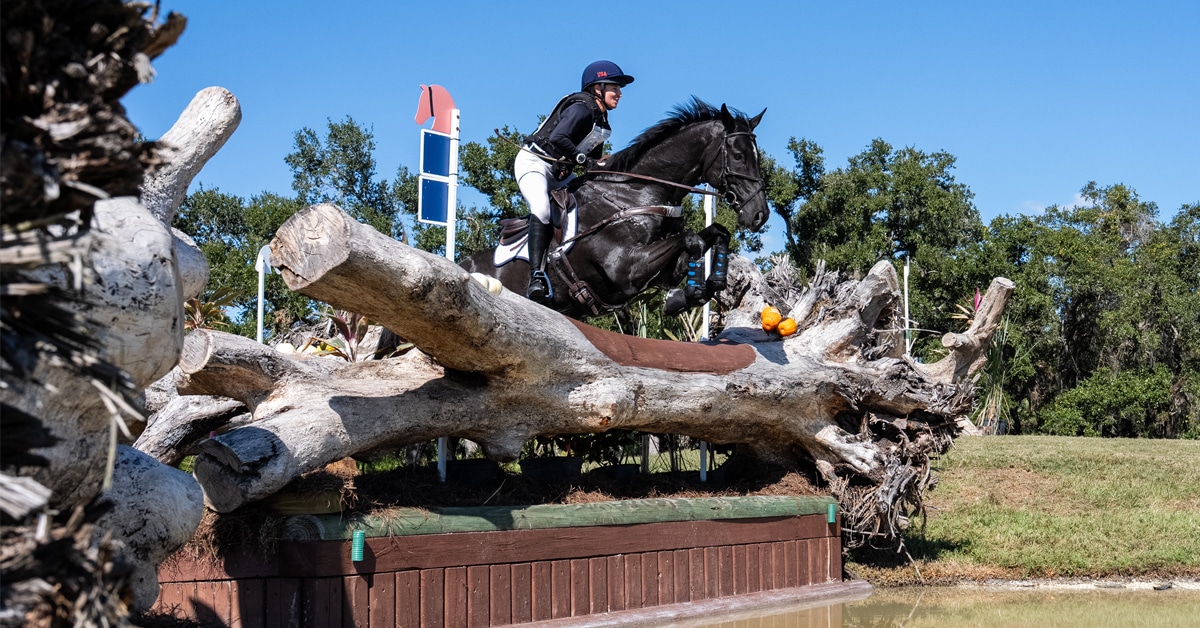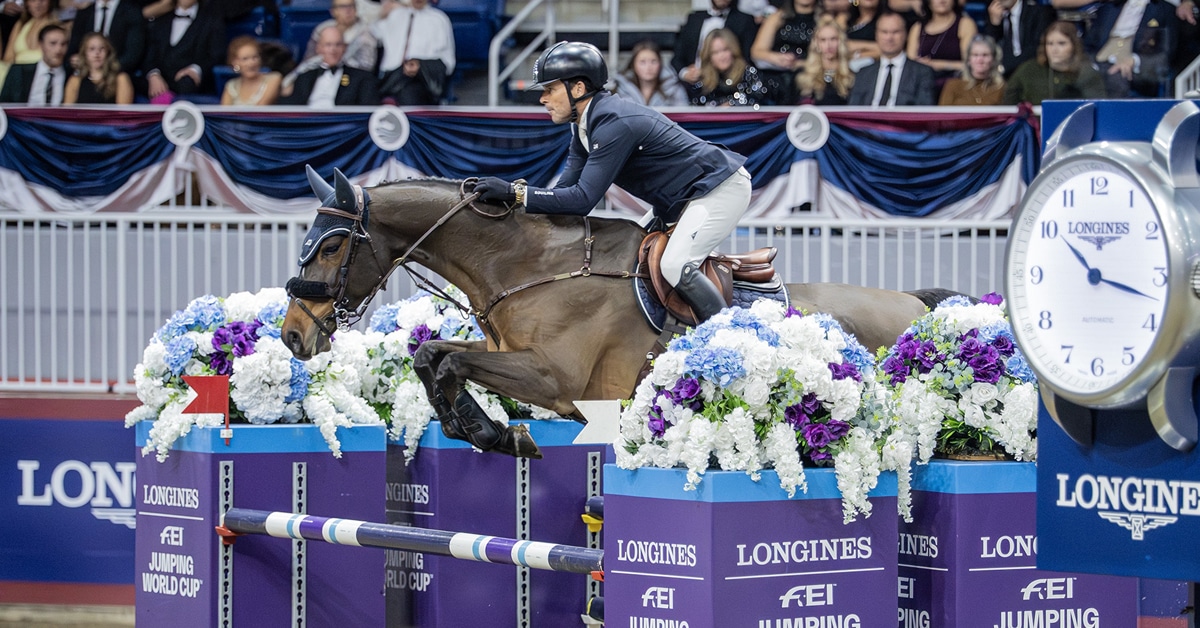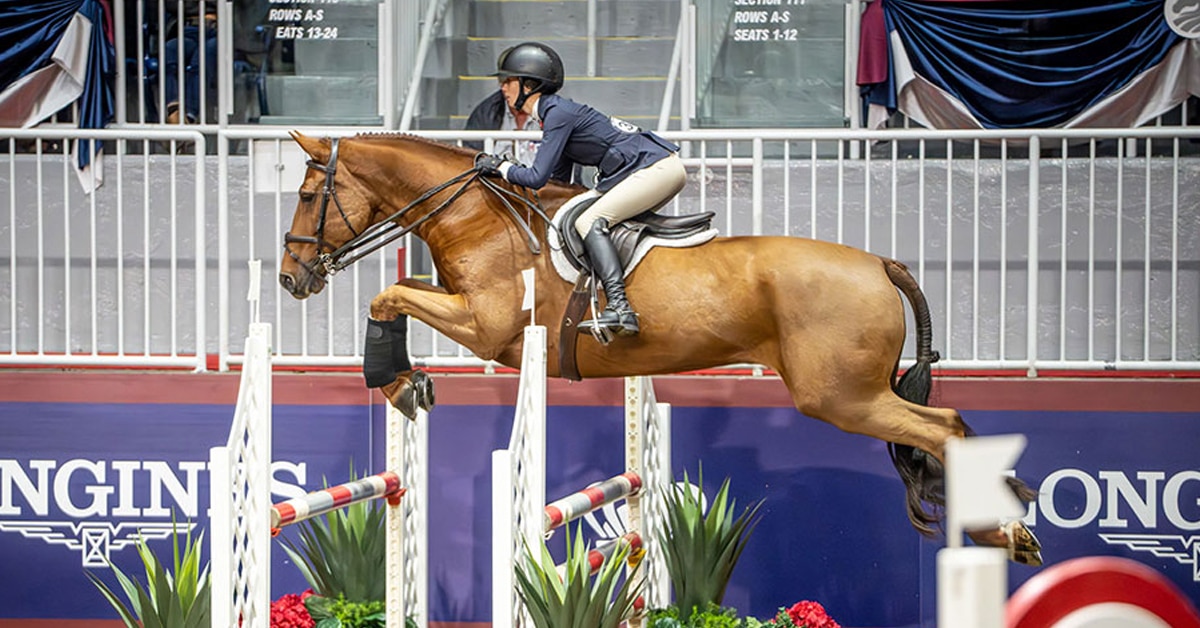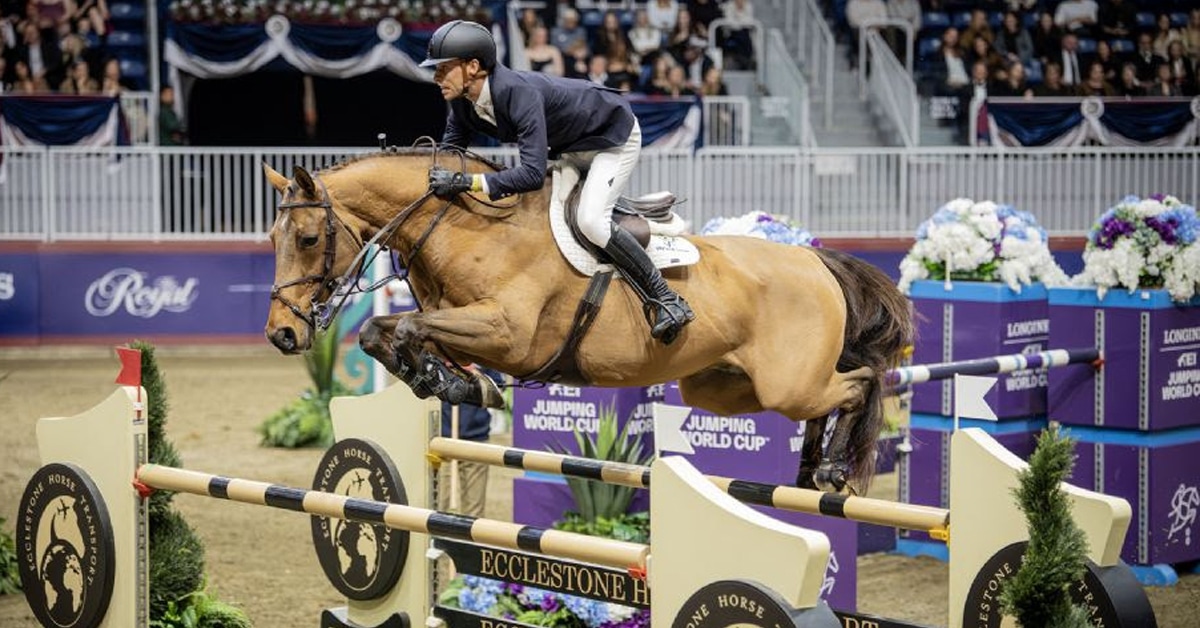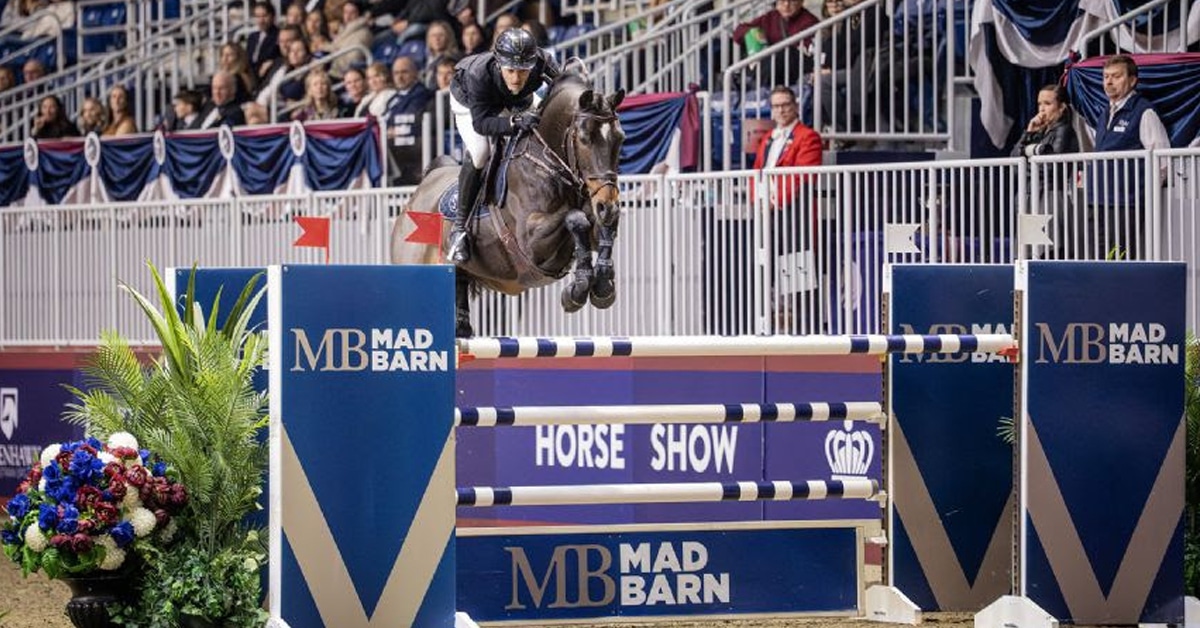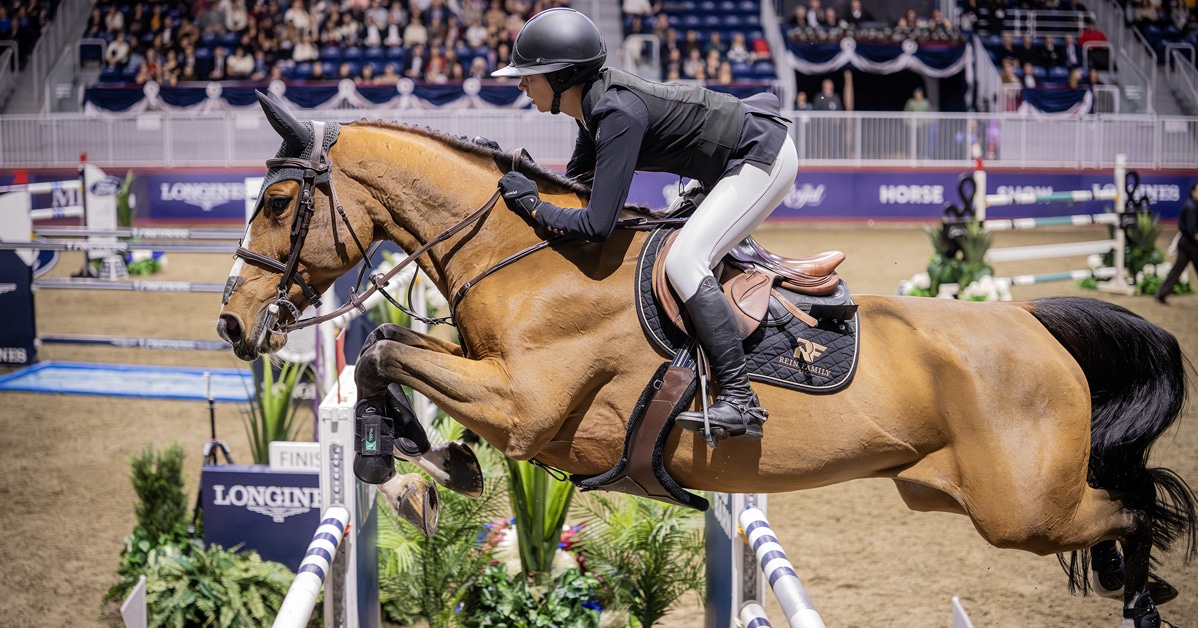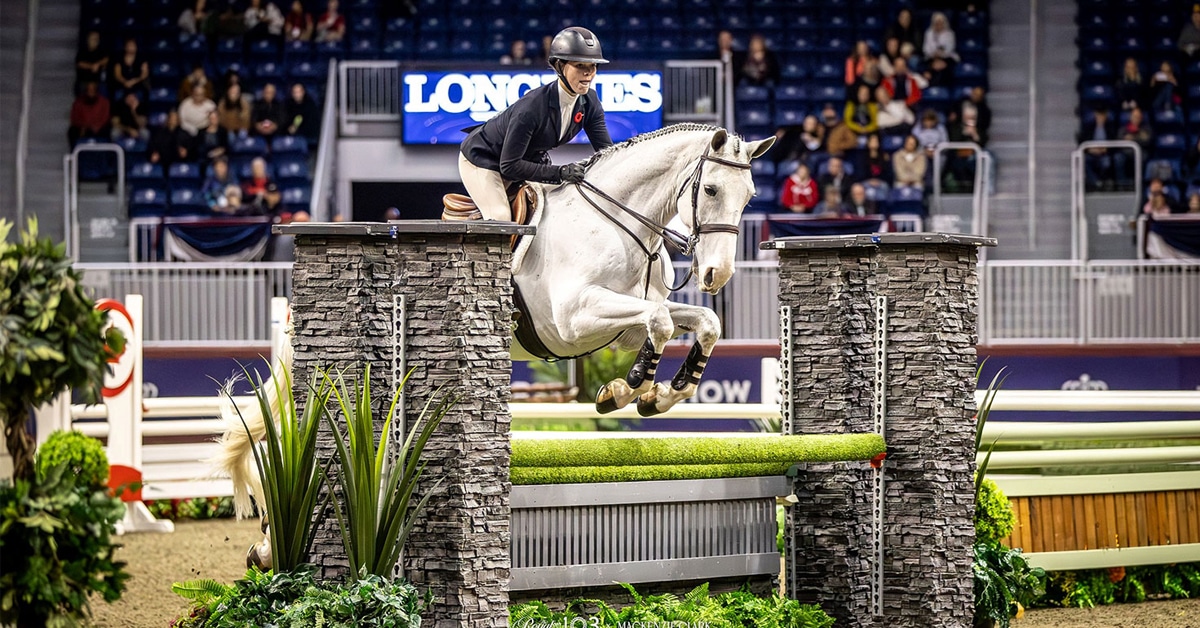The FEI Tribunal has slammed endurance officials who turn a blind eye to horse abuse, after handing down record fines and suspensions to three Emirati riders.
In separate decisions last week, Tribunal suggested the FEI open cases against officials who failed to act against abuse on the day, warning that the “survival” of equestrianism is at stake.
In one case, the horse Castlebar Nato sustained a cannon bone fracture on the home stretch, and the incident was caught on camera. Tribunal said he was “violently kicked until the Horse eventually collapsed from exhaustion.”
In the separate case of Songbird FF, Tribunal declared the horse was so tired that even when grooms ran onto the piste to “encourage” him, he could proceed no faster than walk.
The toughest sanction was applied to Nato’s rider Khalid Jumaa Salem Al Khatri – a 30-month suspension plus a fine of 9,000 Swiss francs ($12,000 CAD) for his alleged abuse during the CEI* 100km at Al Wathba, Abu Dhabi, on December 8, 2018.
Mohammed Saeed al Blooshi was banned for 18 months and fined 6,000 Swiss francs for allegedly abusing Songbird FF in the same race.
Abdul Rahman Saeed Saleh al Ghailani was banned 12 months and fined 4,000 Swiss francs for his riding of Sarab during the President’s Cup 160km race, also at Al Wathba, on February 9th this year. He also forfeits his second place in that prestigious event.
Previously, the longest ban handed down by the FEI Tribunal for horse abuse is six months.
Commenting on Al Khatri, Tribunal found it “unacceptable that third parties have to bring protests of alleged horse abuse cases to the attention of the FEI Tribunal and to the public, while the FEI officials present at the event seemingly remained silent during and after the competition where a horse was clearly abused and ended the competition with a fracture.
“The Tribunal considers it of the utmost importance to clearly express that horse abuse must be taken very seriously to minimize unnecessary suffering of horses, and that proper enforcement of horse abuse rules and regulations by the FEI and FEI officials is crucial for the future and for the survival of equestrian sport in general and specifically the discipline of Endurance.”
After deciding Al Blooshi’s case, Tribunal said it “encourages the FEI to investigate and open disciplinary proceedings, if necessary, against the FEI officials … may have committed by not acting on the present horse abuse case during the actual event.”
All three protests were brought by Pauline van Drumpt on behalf of the international campaigning group Clean Endurance. She submitted extensive video evidence from the official livestream of the two rides.
Footage involving Castlebar Nato and Songbird on December 8th can be seen here:
Footage of Sarab on February 9th can be seen here:
Clean Endurance detailed multiple instances of the horses being repeatedly hit with reins and other items such as slosh bottles, being roughly handled at the vet-gates, and “hazed” (harassed or chased) by grooms and other unauthorised persons on the field of play.
Castlebar Nato was allegedly pushed too hard in earlier stages by Al Khatri who hit the horse “at least 18 times.” The protest added: “Given that the live footage has a slight time lag (10 to 30 seconds in general) to allow broadcasters to edit out incriminating images, in reality the horse was no doubt struck many more times. The incidents occurred …. only a few hundred meters from the finish line, in full view of hundreds of spectators and logically, of the officials waiting at the finish line.”
Al Khatri said the pre-ride briefing covered items disallowed during the ride and that competitors were told “if it’s not a band-aid, it’s allowed.”
Al Khatri said that whenever he felt a horse was tired he retired it. He gave an example of a national ride where he had retired a horse 5km from the finish line, to the “shock” of FEI personnel allegedly present. But Tribunal responded that is the “normal behaviour expected of a rider, and cannot be considered as a mitigating factor.”
Al Khatri said he used the reins to encourage Nato away from another horse that was too close for safety, but Tribunal said: “Mr. Al Khatri was aiming to make the horse go faster as he realised that he was about to be overtaken …there was, in the Tribunal’s view, no danger for such a potential overtaking to take place as there was clearly sufficient space.”
Tribunal noted he showed no remorse.
The FEI Veterinary department submitted that in general terms spontaneous fractures “are caused by already existing bone fatigue (stress fracture) that are due to long term overloading and mismanagement such as over-training, poor training surface and intense frequency of competing” though there was no physical evidence to support this or high speed as the cause in Nato’s case. This closed fracture did not lead to euthanasia.
Tribunal nonetheless felt the fracture could not be over-looked.
All three accused riders appeared unaware of Endurance Regulation Article 810.2 which prohibits using any item to hit a horse, even though three previous riders – two from Bahrain, one from the UAE – have been sanctioned by Tribunal for this in recent years.
What Defines “Excessive?”
The FEI Veterinary Department did not think Castlebar Nato was “exhausted,” but did agree he was struck excessively, defining excessive as “when the horse does not respond forward to the initial 1-3 taps and the tapping/whipping/beating still continues.”
Al Ghailani – seen taking his legs well away from his horse’s side when kicking – denied hitting his horse, though Tribunal said he clearly did. He also disputed that the video showed any interference from support personnel.
Al Ghailani said his allegedly “excessive” natural aids were the norm in endurance. He had been cleared in an internal investigation by the Emirates federation. The ground jury also testified it witnessed nothing wrong.
“Whilst I was using my legs to encourage Sarab to maintain momentum in the last few hundred meters, I do not believe this caused pain or unnecessary discomfort,” said Al Ghailani.
“I am not a heavyweight rider – you will see in the video I had to ride with a weight pad –and, after 160km of riding in the heat at a fast pace, I was tiring and my encouragement was fairly ineffectual.
“I acknowledge that this was not my most stylish riding and I will take on board for the future how this could be misconstrued.
“It is fairly standard in endurance events for the rider to encourage the horse in this manner in a racing finish and can be frequently seen in competitive endurance events throughout Europe and elsewhere around the world. In a Setzi-style saddle with no saddle flaps and with long stirrups, it can also look more dramatic than in a traditional saddle.”
Of Al Ghailani, the FEI Veterinary department observed: “one single very hard strike of the legs, hands, reins, water-bottle or whip etc should also be considered as excessive, regardless of the response from the horse… excessive kicking of a horse and pulling of the reins with high hands …. is likely to cause pain or unnecessary discomfort.
“It seems to be Mr Al Ghailani’s view that horse abuse requires whipping or beating a horse. However, as previously found, this is not the case. Likewise, it seems that the president of the ground jury seems to have doubts with regard to the application of Article 142 of the GRs.”
In Al Blooshi’s case, Tribunal ruled that that Songbird was exhausted, presenting with a heartrate of 88bpm (the limit is 64bpm) after a recovery period of 19 minutes. Tribunal said: “It was very serious that the athlete and support personnel kept on pushing the horse despite it was clear from the videos that the horse was exhausted.
“To drive a horse in a competition until it refuses to move forward more than in walk was against the welfare of the horse.”
The FEI reserved the right to bring cases against Al Blooshi’s assistants. Tribunal said: “The FEI should assure that all potential horse abusers are sanctioned accordingly, including the support personnel involved in this case…. by for example hitting the horse with water bottles [they] might have committed horse abuse within the meaning of Article 142.1 of the GRs themselves also.”
Al Blooshi said: “The horse [Songbird]…. is of a young age and has very limited experience in the endurance field and has never been competing in any endurance championships, therefore on the day I was riding and guiding the horse in order to help, I did not cause any pain or abuse my horse.”
The riders have 21 days to decide if they will appeal to the Court of Arbitration for Sport.
Who Were the Officials?
The December 8th officials were not named in the decision notices, but the published FEI schedule lists the ground jury as president Ismail Abdul Hakeem (UAE), Mohammed Ali al Hadrami (UAE,) Mohammed Shamsul Abdul Careem Azhar (Sri Lanka) and Mustapha Mafoudi (Saudi Arabia.) The chief steward was Abdul Rahim Hassan al Bloushi (Oman.)
They were also members of the ground jury for the President’s Cup, with Mafoudi president on that occasion. A further abuse protest involving another horse in the President’s Cups is awaiting determination.
Commenting on the decisions, Pauline van Drumpt said: “Clean Endurance regrets that it has had to file a series of abuse protests with the FEI – had the officials done their jobs on the day, this would not have been necessary.
“It has therefore asked the FEI again to start publishing the records of officials on their public database.
“This information is key for enabling organisers to choose the best officials for their event, to respect the minimal rotation requirements and to avoid conflicts of interest. Clean Endurance firmly believes that the FEI must provide transparency about officials, urgently, as a first step in this no doubt long and complicated improvement process.”
She added: “Clean Endurance acknowledges the efforts the FEI and its Endurance Temporary Committee have made in the past months to come up with an extensive list of rule proposals aimed at restructuring the sport. It is however adamant that unless endurance moves away from purely speed-based competitions, the current pattern of increasing horse destruction and abuse will only worsen.
“It believes the current rule proposals as presented at the FEI Sports Forum 2019, although positive in many respects and long overdue, will NOT be sufficient to achieve a significant restructuring of the sport and the necessary reduction in speeds.”
More News
